When King Manuel I of Portugal fell under the spell of azuleijos (originally white and blue ceramic, Moorish decorative tiles) during a visit to Alhambra in southern Spain, he just had to have such tiles to decorate his palace. Manuel therefore orders players to decorate the castle walls with these tiles, but these tiles must be placed in specific patterns, otherwise you will earn less prestige. Be careful not to drop pieces on the ground while tiling, as losing these precious tiles can also cause you to lose a lot of prestige.
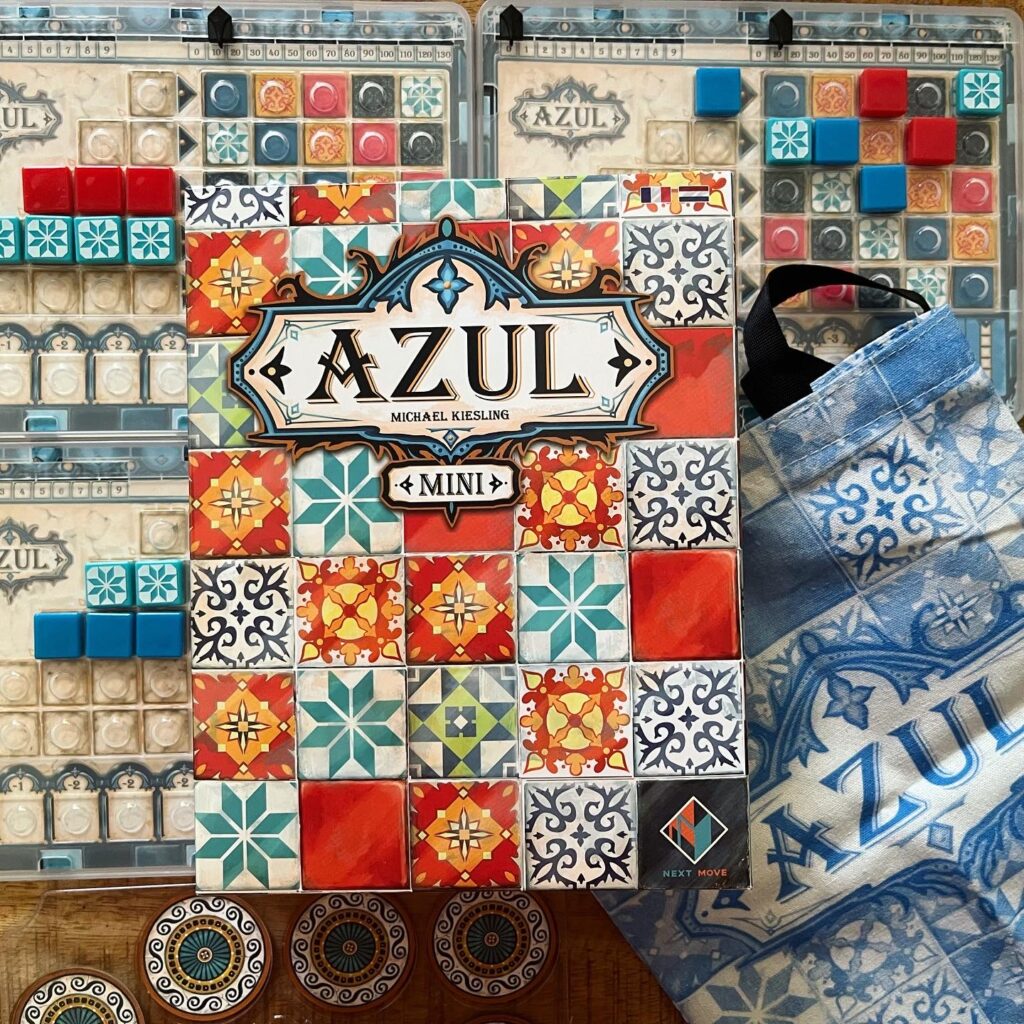
I think many players know Azul well, as the game is immensely popular, received multiple awards and received several releases. For the Azul laymen among us: in the game Azul, players take turns collecting coloured tiles from equally colourful tile factories. At the beginning of a round, a number of round factory tiles are placed depending on the number of players. Four random azul tiles are placed on each factory tile. These azul tiles are drawn from a draw bag. Each turn, a player chooses a specific colour of tile available on one of the factory tiles or the centre of the table. Other tiles on a factory tile that are not chosen are moved to the centre of the table, where a large pool of available tiles is slowly created.
So a player takes all available tiles of the chosen colour and places them in a kind of ‘queue’ next to one of the rows of the wall on his player board. Each ‘queue’ has a varying capacity to place tiles. You must place all tiles collected during a turn on the same row, and you may not place tiles if you already have the same colour on the same row in the wall. Players should take tiles from the factory tiles and/or the centre of the table until no more tiles are available during a round. Tiles that players cannot place fall to the ground and earn minus points at the end of a round.
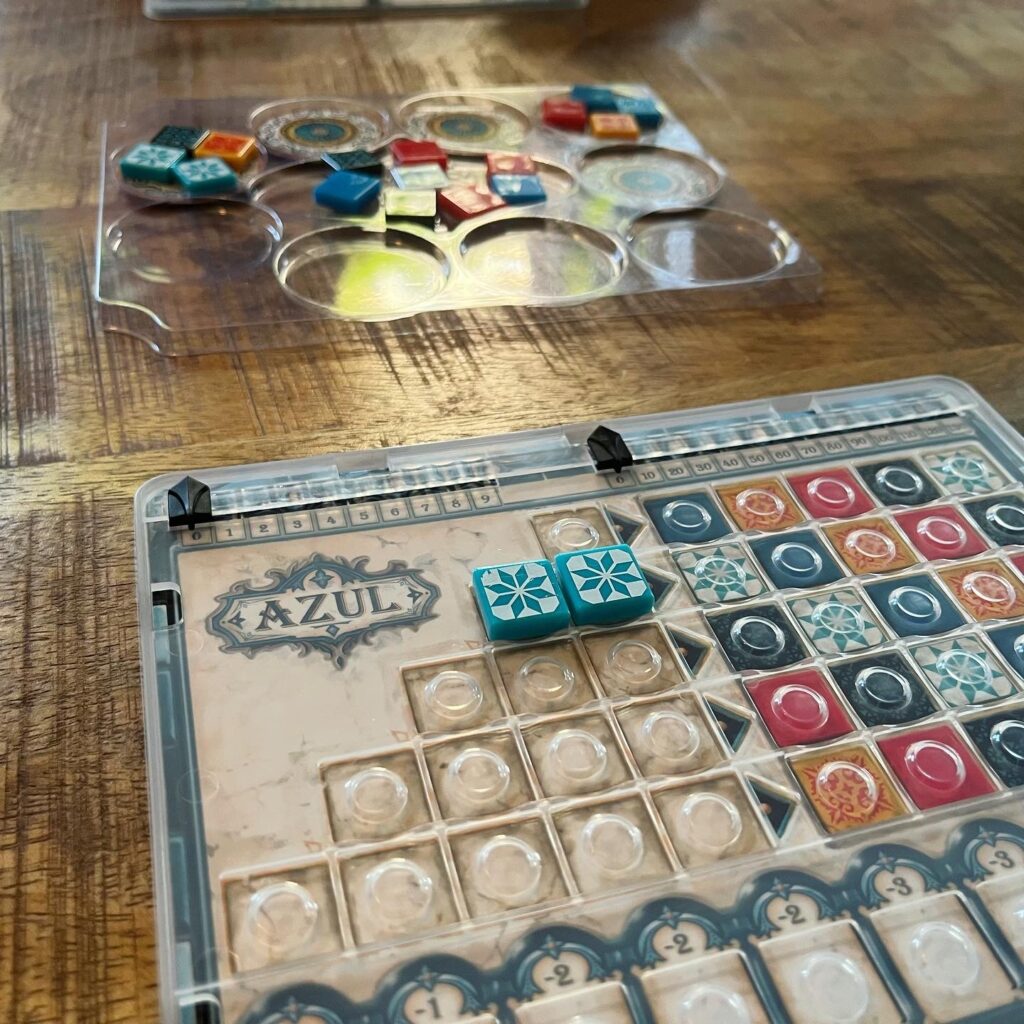
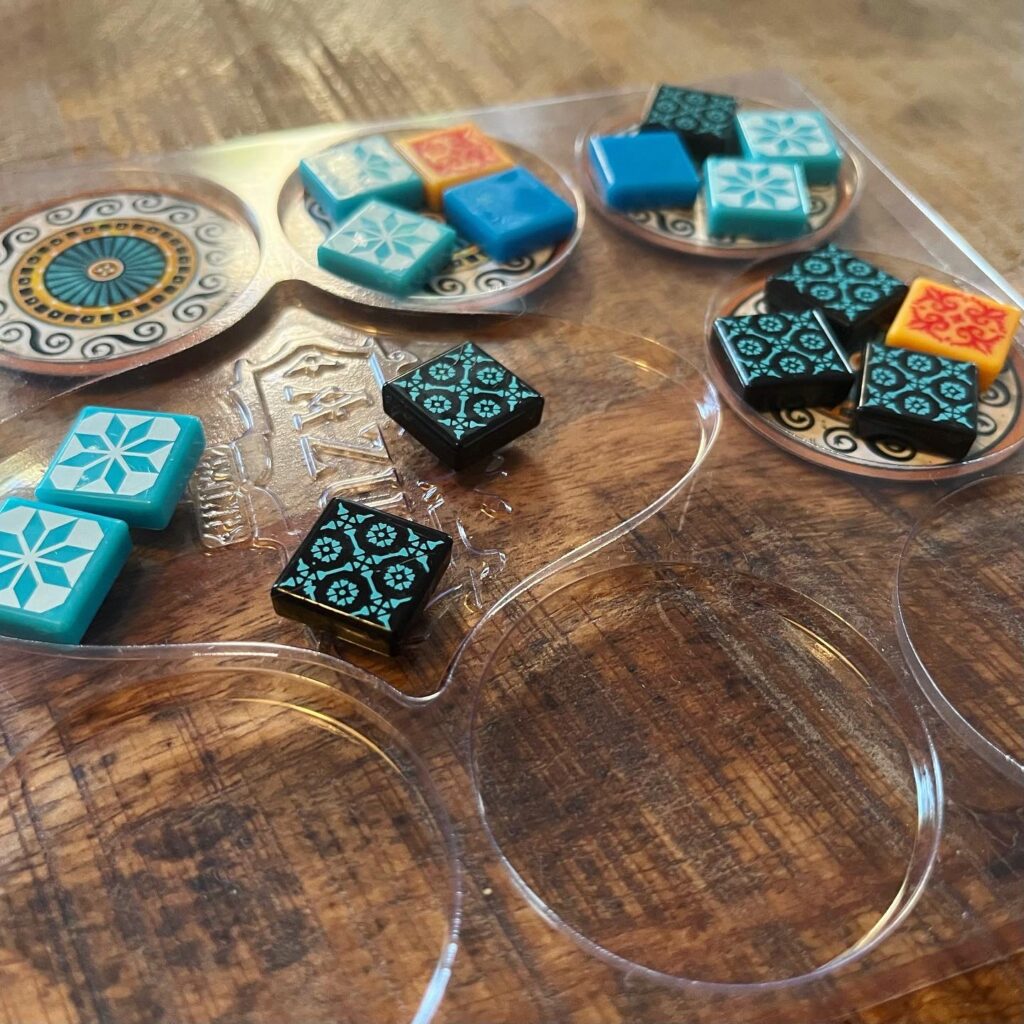
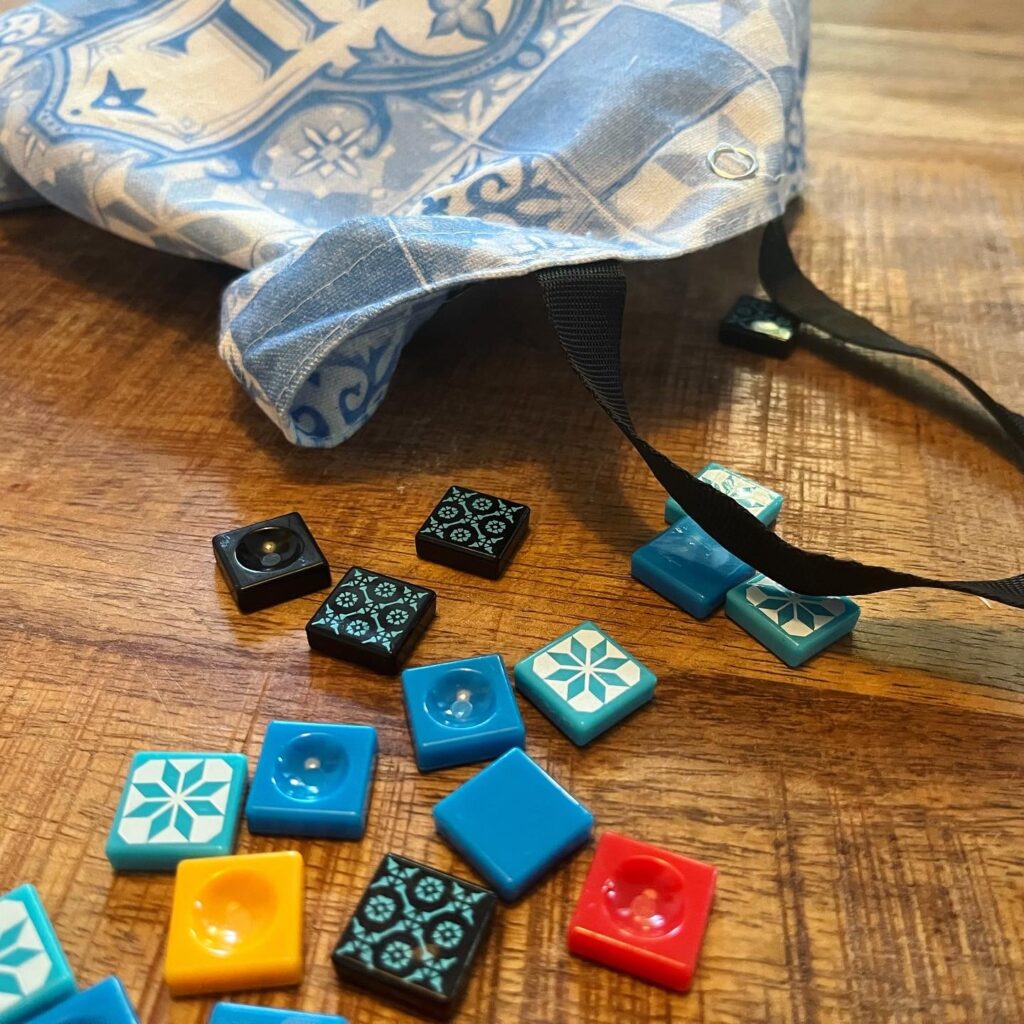
After players have collected all available tiles, they check if a ‘queue’ is full. if so, they place one of the tiles on the corresponding row of the wall and score points based on the tile they just placed. You score more points in the case of adjacent tiles and you score both adjacent tiles in columns and in rows. Tiles in queues that the player has scored with are discarded and tiles from incomplete queues remain. Players score minus points for all tiles lying on the floor and those tiles are then discarded as well. Once a player has decorated a full row in the wall, the game ends. At the end of the game, players score extra points for specific patterns (rows and columns) and completing sets. The player with the most points, has gained the most prestige with the king.
Azul is a very entertaining game that you can also use perfectly well as an introduction to modern board games for less experienced players. The gameplay is smooth and clear, and the game materials are superb. Allen this is not a review of the base game, but of Azul Mini! When the original Azul came out in 2017, it was during my personal board game renaissance, where I had rediscovered the hobby about two years earlier. I well remember that someone on Budget Games had created a travel version of Azul by having the player boards printed on mouse pads, allowing all the playing material to fit in the draw pocket. I long had the idea of duplicating this idea, but it actually occurred to me that Azul might be a tad too heavy to carry in your hand luggage. The actual outcome is Azul Mini which is now available 6 years later. The gameplay is exactly the same, but the difference, of course, is in the material.
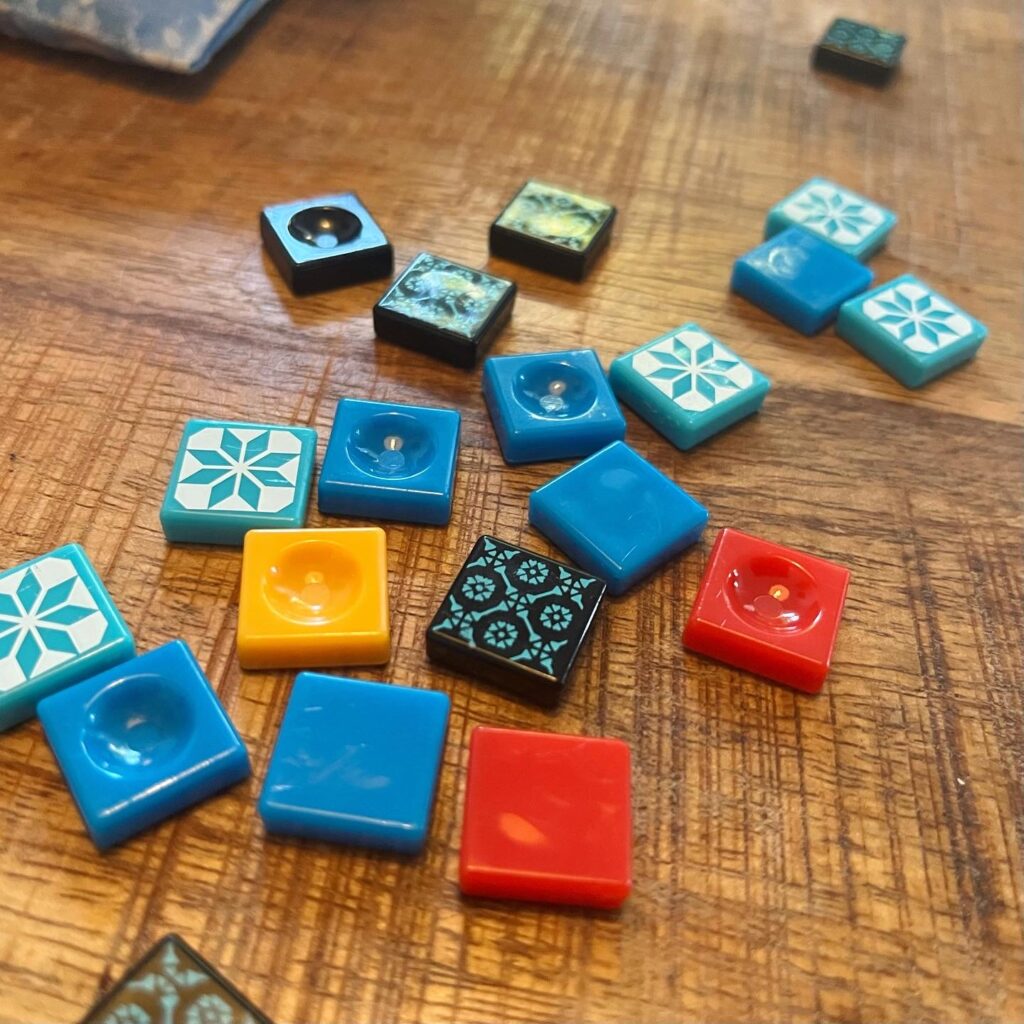
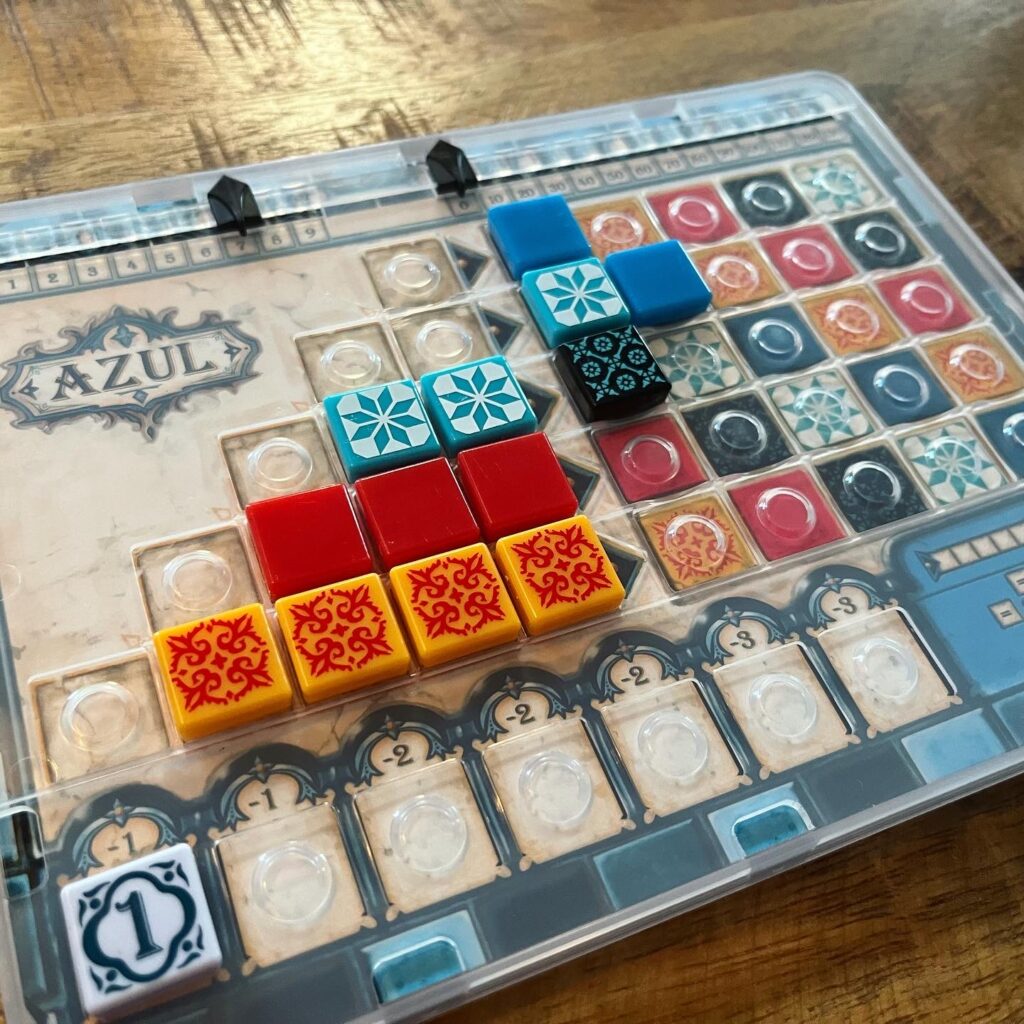
The draw bag is also the packaging this time and contains two handy loops that allow you to carry the game like a purse. The bag holds the four player boards, the tiles, factory tiles and a plastic tray where you can place the factory tiles as a kind of tray. The tiles are smaller and the material is less solid than the normal edition. A big plus point are the player tiles, which consist of a double-sided cardboard that you can place in a plastic holder. On this plastic holder, you can easily place the tiles (which this time have a partially hollowed out back) so your tiles won’t move if you touch the player board or if you want to play Azul safely during a wild bus ride on holiday. Azul Mini therefore offers a godsend for travelling players.



